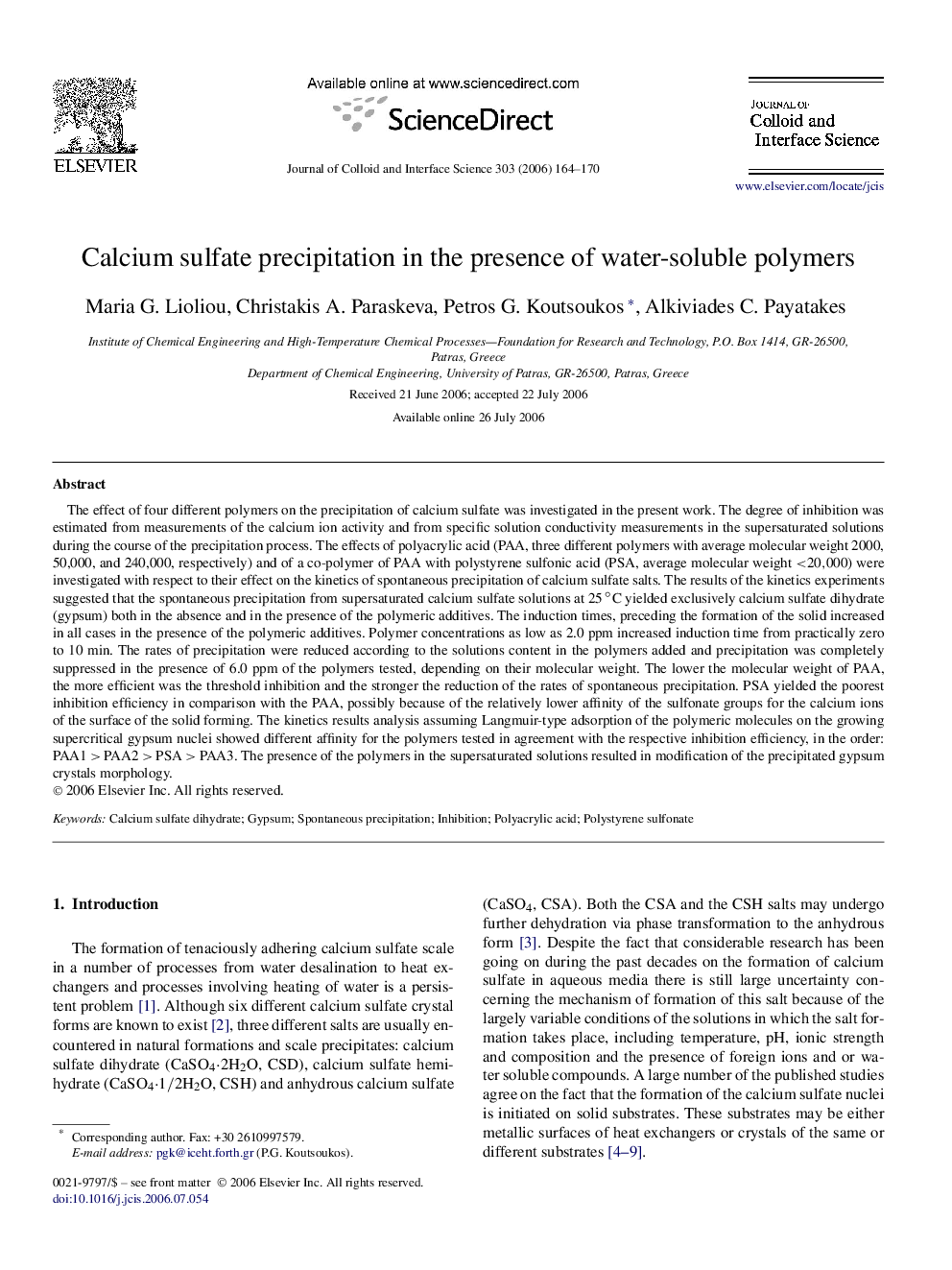| Article ID | Journal | Published Year | Pages | File Type |
|---|---|---|---|---|
| 612806 | Journal of Colloid and Interface Science | 2006 | 7 Pages |
The effect of four different polymers on the precipitation of calcium sulfate was investigated in the present work. The degree of inhibition was estimated from measurements of the calcium ion activity and from specific solution conductivity measurements in the supersaturated solutions during the course of the precipitation process. The effects of polyacrylic acid (PAA, three different polymers with average molecular weight 2000, 50,000, and 240,000, respectively) and of a co-polymer of PAA with polystyrene sulfonic acid (PSA, average molecular weight <20,000<20,000) were investigated with respect to their effect on the kinetics of spontaneous precipitation of calcium sulfate salts. The results of the kinetics experiments suggested that the spontaneous precipitation from supersaturated calcium sulfate solutions at 25 °C yielded exclusively calcium sulfate dihydrate (gypsum) both in the absence and in the presence of the polymeric additives. The induction times, preceding the formation of the solid increased in all cases in the presence of the polymeric additives. Polymer concentrations as low as 2.0 ppm increased induction time from practically zero to 10 min. The rates of precipitation were reduced according to the solutions content in the polymers added and precipitation was completely suppressed in the presence of 6.0 ppm of the polymers tested, depending on their molecular weight. The lower the molecular weight of PAA, the more efficient was the threshold inhibition and the stronger the reduction of the rates of spontaneous precipitation. PSA yielded the poorest inhibition efficiency in comparison with the PAA, possibly because of the relatively lower affinity of the sulfonate groups for the calcium ions of the surface of the solid forming. The kinetics results analysis assuming Langmuir-type adsorption of the polymeric molecules on the growing supercritical gypsum nuclei showed different affinity for the polymers tested in agreement with the respective inhibition efficiency, in the order: PAA1 > PAA2 > PSA > PAA3. The presence of the polymers in the supersaturated solutions resulted in modification of the precipitated gypsum crystals morphology.
Graphical abstractThe presence of polyacrylic acid in supersaturated solutions retards the spontaneous precipitation of calcium sulfate dihydrate and causes changes of the morphology of the precipitated crystals.Figure optionsDownload full-size imageDownload high-quality image (25 K)Download as PowerPoint slide
